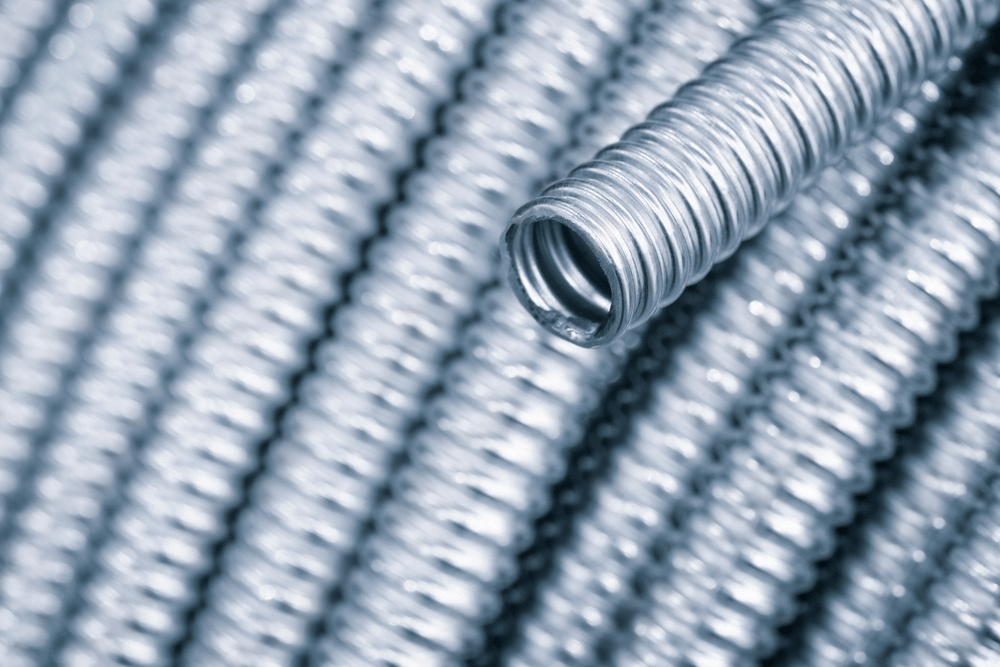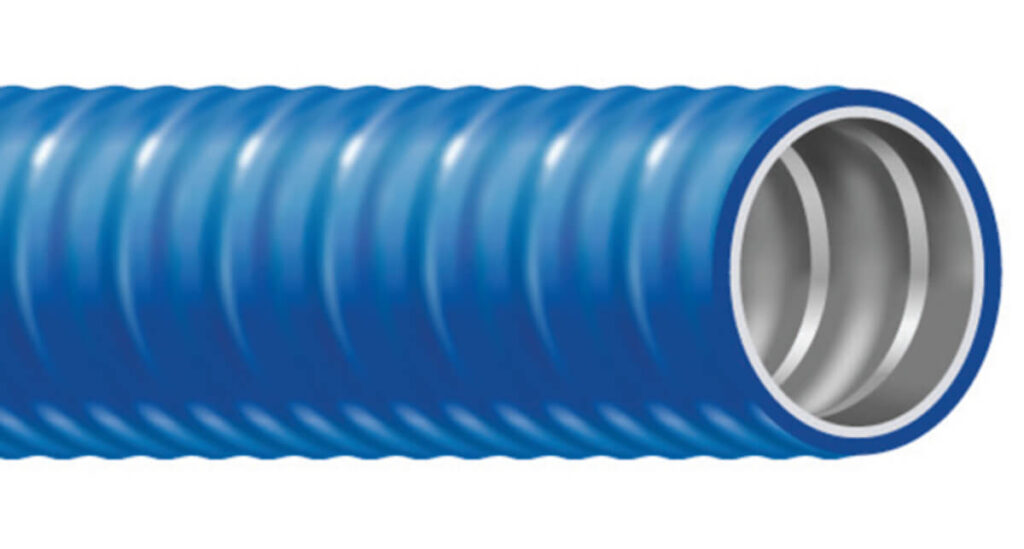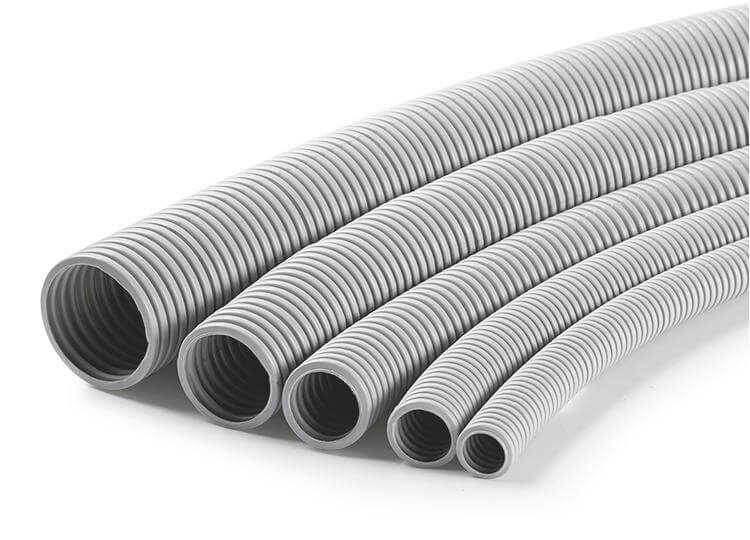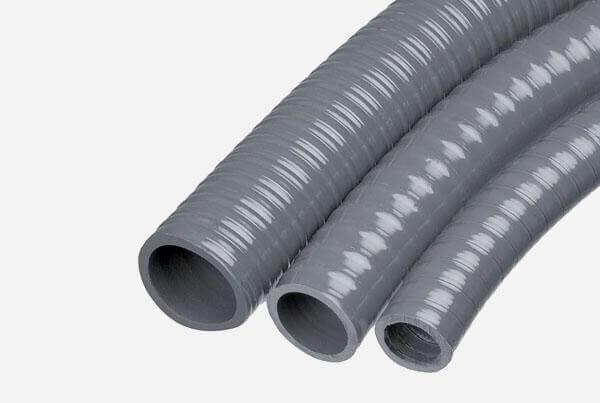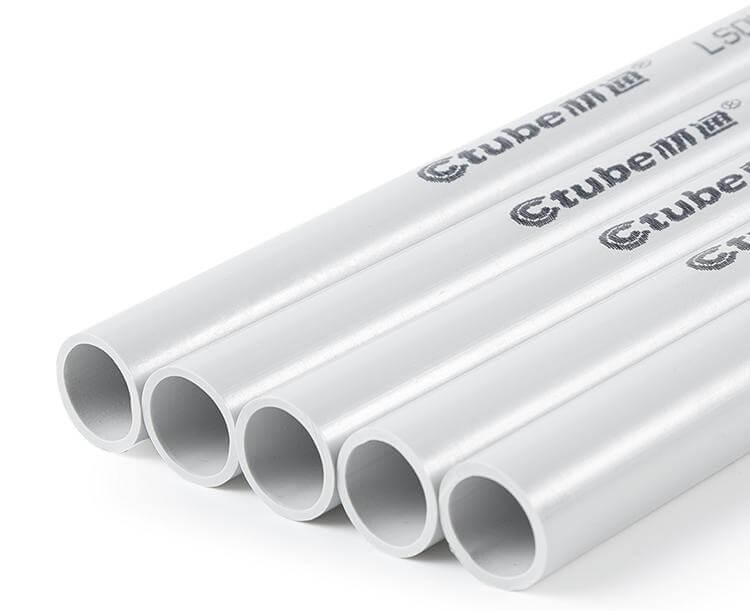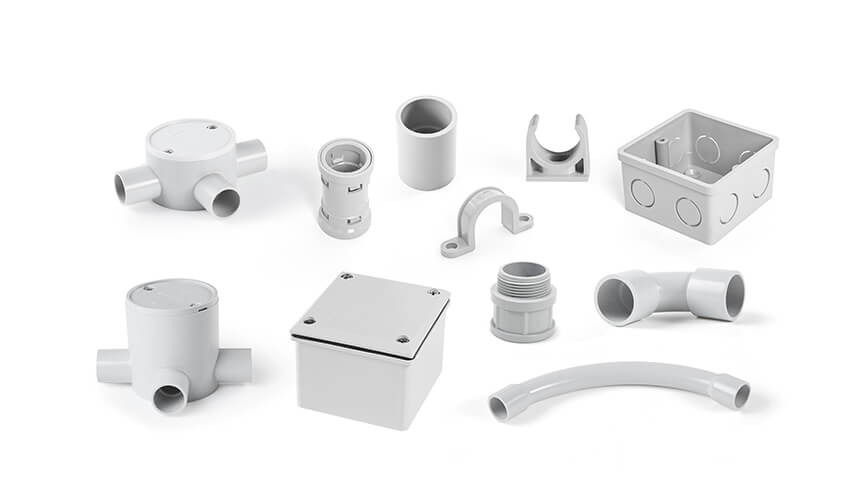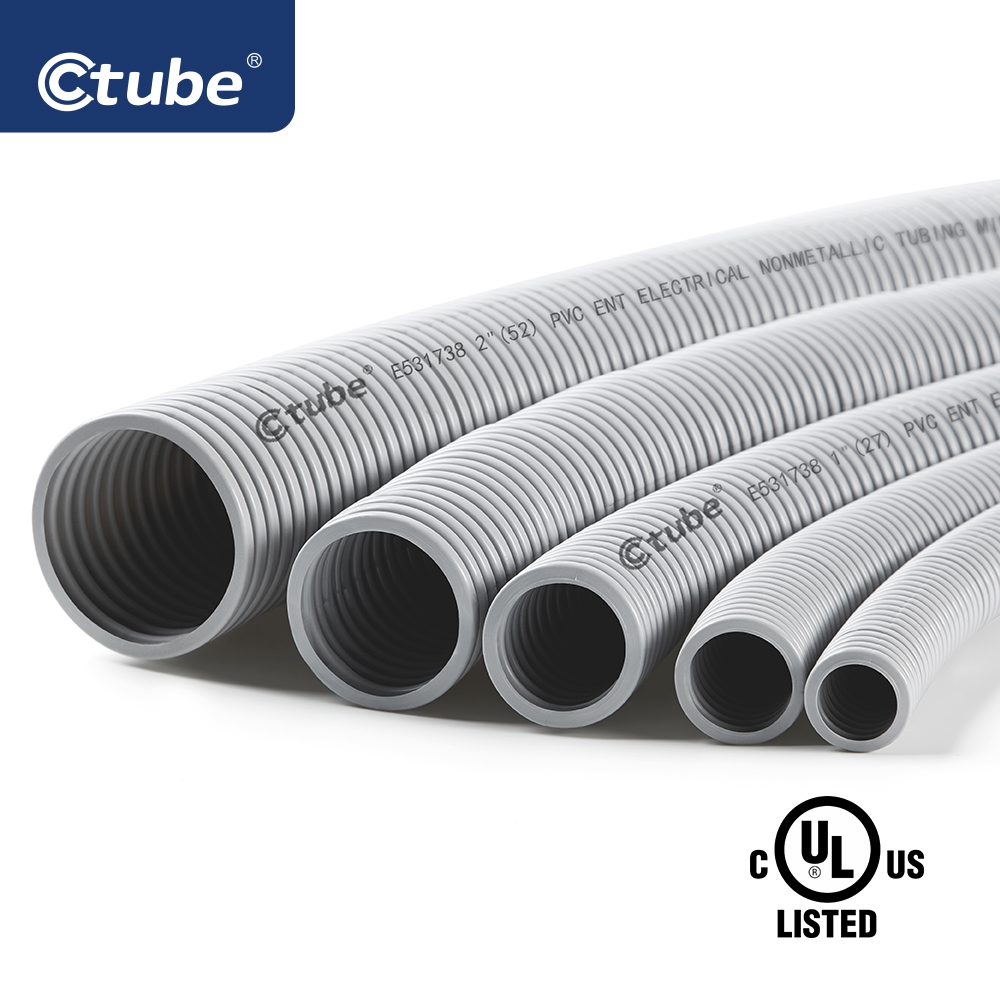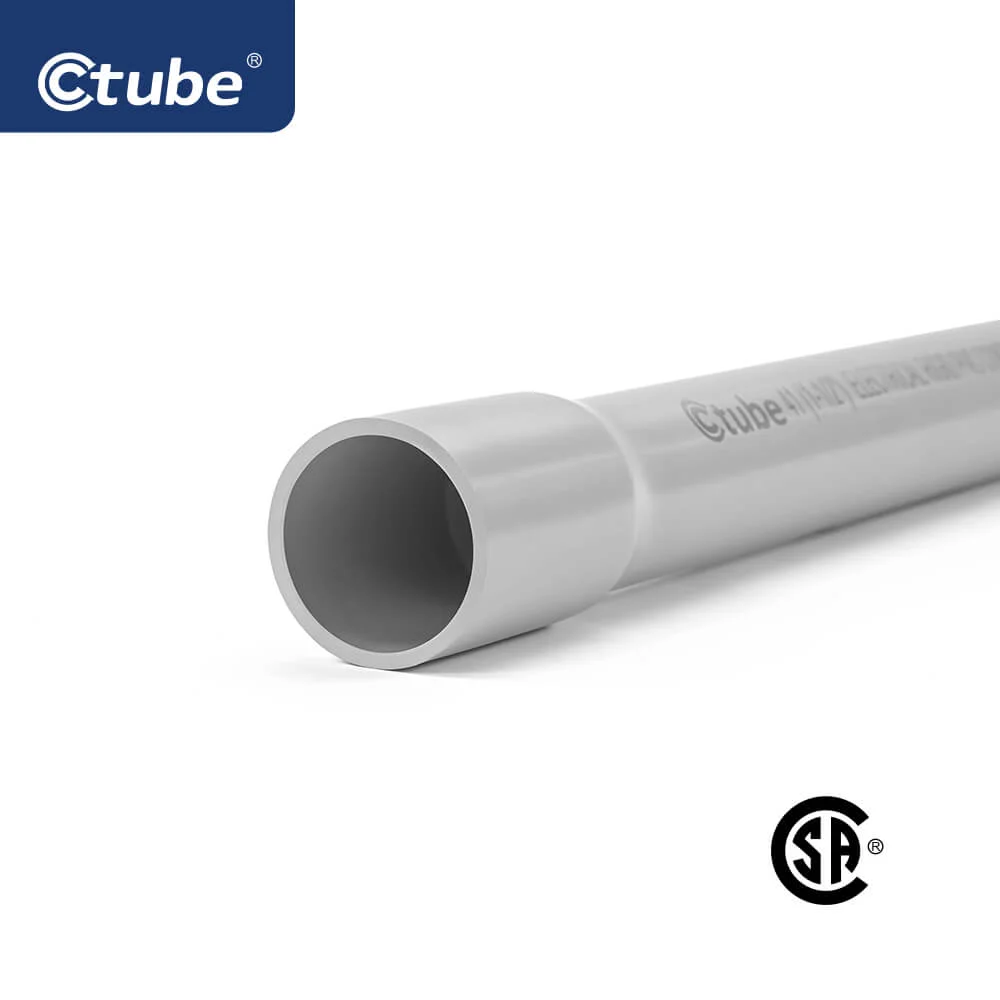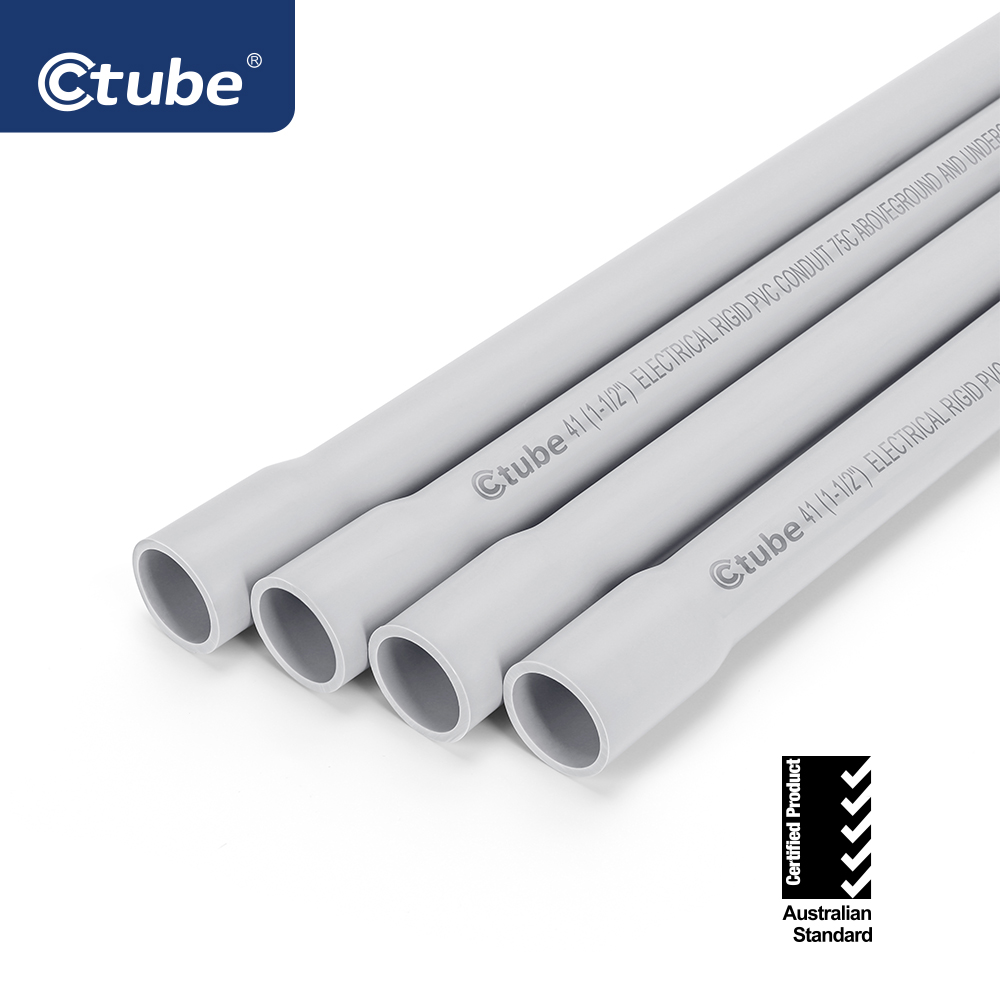Table of Contents
Toggle1. Introduction: What Is a Conduit Pipe?
A conduit pipe is a type of protective tubing used to route and safeguard electrical wires through buildings, walls, ceilings, or underground in residential, commercial, and industrial settings. Its main job is to shield wires from physical damage, moisture, heat, and corrosion, while also keeping the wiring neat and organized.
In this article, we’ll explore the different types of conduit pipes, their materials, sizes, and accessories like conduit bends, elbows, bodies, and boxes. You’ll also learn how to choose the right conduit for different environments—whether it’s for a home project or a large industrial installation.
This guide is useful for anyone involved in electrical work—from professionals like electricians and builders to DIY homeowners and those new to the field—looking to understand and choose the right conduit materials and fittings.
2. Understanding Electrical Conduit Types
Understanding the different types of conduit pipe is the first step to choosing the right one for your project.
We can better understand them by organizing them into several classification systems.
2.1 Electrical Piping Material: Metal and Non-metallic Conduit
One of the most important factors when choosing a conduit pipe is the durability of the material.
In general, conduit pipes are made from either metallic or non-metallic materials, each offering unique benefits and levels of durability.
Metallic conduits are typically made from steel, aluminum, or stainless steel—each selected for specific performance needs.
Non-metallic conduits are typically made from plastic-based materials, with PVC (Polyvinyl Chloride) being the most widely used. Other materials include HDPE (High-Density Polyethylene), RTRC (Reinforced Thermosetting Resin Conduit) – Also known as fiberglass conduit.
And a special material like low smoke zero halogen also made as electrical conduit for safety during emergencies.
2.2 Conduit Pipe Types by Flexibility: Rigid vs. Flexible Conduit
In electrical installations, not every conduit run is straight or predictable. That’s where the flexibility of conduit pipes plays a crucial role. Some systems need rigid protection, while others require bendable solutions to navigate corners, machinery, or tight spaces.
Conduits can be broadly categorized as rigid or flexible, depending on how much movement or bending they allow during installation.
For rigid conduits, conduit elbows or conduit bends are used to create changes in direction. These are pre-formed or field-bent sections designed to turn conduit runs around obstacles. They’re available in various angles such as 45°, 90°, or custom degrees.
In many installations of flexible conduits, conduit bodies or junction boxes are paired with flexible conduit to allow access points for pulling, splicing, or inspecting wiring systems. These components add convenience without compromising system integrity.
2.3 Conduit Pipes by Indoor, Outdoor or Underground Conduit
When choosing the appropriate conduit pipe, understanding the installation environment is crucial. Different environments pose unique challenges that affect the conduit’s performance, durability, and safety.
Indoor conduit is shielded from extreme weather, moisture, and harsh chemicals. However, factors like physical impact, temperature fluctuations, and dust can still influence the conduit’s performance.
Common indoor installation areas include homes, office buildings, and industrial spaces where electrical wiring needs to be neatly routed through walls, ceilings, and floors.
Outdoor conduits to much more severe conditions such as Temperature extremes, UV radiation from sunlight, moisture from rain or humidity, and physical wear from the environment.
Outdoor electrical wiring in these settings need to be durable and resistant to corrosion, UV degradation, and impact. Moreover, the conduit must be able to withstand outdoor hazards such as falling debris or animals.
Underground conduit pipe challenged by high moisture content, soil pressure, and the risk of corrosion.
Run underground Conduits installed underground must be able to resist the harsh conditions of being buried, including moisture infiltration, accidental impacts and potential chemical exposure.
Additionally, underground duck bank must be installed according to NEC code underground conduit requirements.
Hazardous environments include areas where explosive gases, flammable materials, or toxic substances may be present. These environments require conduits that not only resist environmental stresses but also protect against electrical faults that could ignite sparks or cause dangerous explosions.
3. Detailed Overview of Common Types of Conduit Pipe
Now that we’ve explored the different ways to classify conduit pipes—by environment, flexibility, and material durability—let’s take a closer look at the most commonly used conduit types and what makes each one unique.
3.1 EMT (Electrical Metallic Tubing)
EMT pipe, also known as “thin-wall” conduit, is made from galvanized steel and sometimes aluminum. Since EMT doesn’t have threads, it relies ona compression or set-screw EMT fittings like couplings and connectors to join sections or attach to boxes.
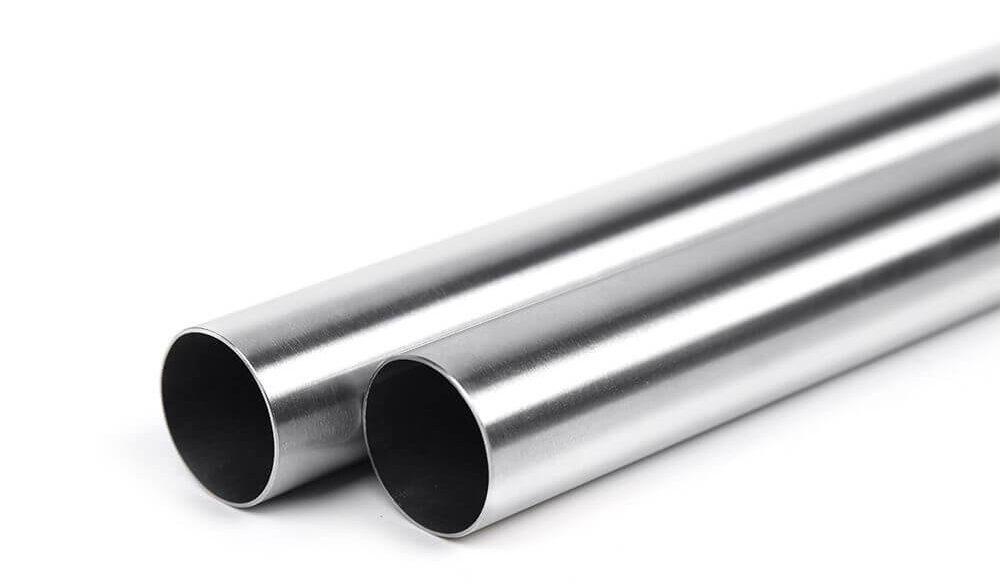
For projects with tight budgets, EMT pipe price is generally lower than rigid conduit types.
EMT conduit is known for being lightweight and easy to cut or bend. Lower EMT conduit weight, making it easier to install, also save cost in labor and transport.
3.2 RMC (Rigid Metal Conduit)
Rigid Metal Conduit, also known as RSC (Rigid Steel Conduit) and RGC (Rigid Galvanized Conduit), is one of the strongest types of conduit pipes.
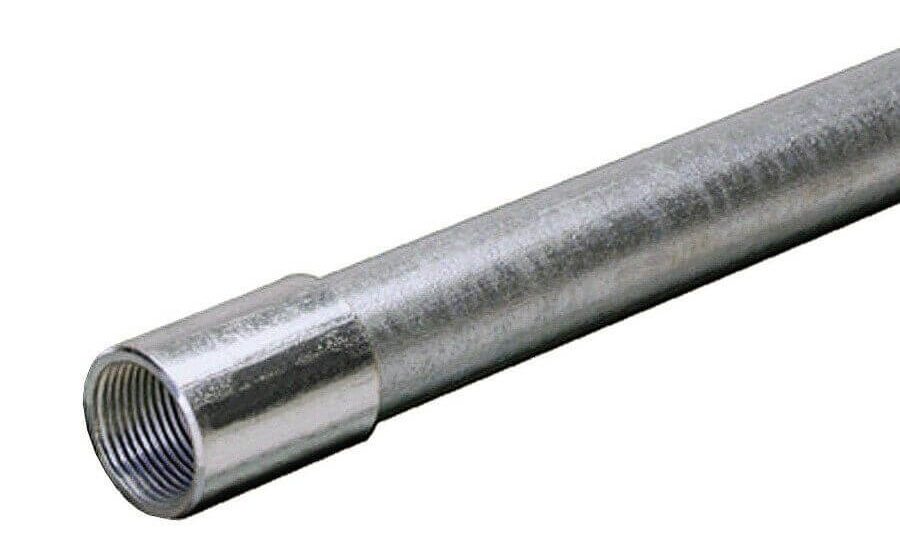
RMC has thick walls and comes in larger conduit sizes, which makes it very durable and ideal for heavy-duty projects. It’s often threaded at the ends and higher conduit pricing, which different with EMT.
It’s usually made of galvanized steel or stainless steel and is designed to protect wiring in tough environments like outdoor or underground installations. Rigid Aluminum Conduit (RAC) is one of the types of rigid metal conduit.
3.3 IMC (Intermediate Metal Conduit)
Intermediate Metal Conduit, or IMC, is a bit lighter than RMC but still strong enough for many commercial and industrial jobs. It’s made of steel with a protective coating, making it suitable for outdoor or damp environments. It’s a good option if you want a balance between strength and weight.
3.4 FMC (Flexible Metal Conduit)
Flexible Metal Conduit, or FMC, is made of a spiral metal strip that allows it to bend easily. It’s perfect for tight or curved spaces where rigid conduit won’t work.
FMC is often used to connect electrical equipment like lights, motors, or HVAC units, especially when there’s movement or vibration.
However, it doesn’t provide the same level of protection as rigid types, so it’s best for dry, indoor use.
3.5 LFMC (Liquidtight Flexible Metal Conduit)
LFMC is similar to FMC but has a waterproof plastic coating over the metal.
This makes it a great choice for wet or oily areas, like outdoor units or machinery in factories. It can bend easily like FMC but offers extra protection from moisture and corrosion.
3.6 ENT (Electrical Nonmetallic Tubing)
ENT is a type of flexible plastic conduit, made for indoor use in walls, ceilings, or concrete.
Unlike rigid conduit types, ENT has a smooth, round shape with a corrugated exterior that allows for increased flexibility, making it ideal for installations in tight or hard-to-reach spaces.
The smooth interior of ENT ensures a clean path for wiring, reducing the risk of abrasion and ensuring long-term performance.
ENT is typically made from PVC, offering good protection against moisture and corrosion. Its lightweight and flexible design, combined with a relatively low cost, makes ENT a popular choice for many electrical installations where flexibility and ease of use are important.
3.7 LFNC (Liquidtight Flexible Nonmetallic Conduit)
LFNC is a type of flexible plastic conduit that’s designed to be both watertight and bendable, making it ideal for situations where moisture protection and routing flexibility are important. It’s often used in outdoor, wet, or damp locations, like near HVAC units, pumps, or outdoor lighting systems.
LFNC is made from nonmetallic materials—usually a PVC outer jacket over a flexible plastic core. It resists sunlight, water, oils, and chemicals, and can handle movement or vibration better than rigid options. It connects easily using special liquid-tight fittings.
It’s available in different types (such as LFNC-A, LFNC-B) with varying construction and flexibility levels, but all are meant to keep moisture out while allowing easy installation in tight spaces.
3.8 PVC Conduit (Polyvinyl Chloride)
This description refers specifically to rigid PVC conduit, which distinguish from flexible PVC conduit, same as ENT, we mentioned above.
One notable feature of rigid PVC conduit is that it typically comes with one end flared—also known as a bell end or conduit end—allowing two pieces to be easily joined without extra fittings.
Both the inner and outer surfaces are smooth, which helps with easier wire pulling and reduces friction during installation.
Unlike galvanized steel conduit pipe such as RMC, PVC has no threads and is joined using solvent cement. This is the in
For direction changes, users can either install a factory-made conduit elbow or some can be gently heat-bend the pipe on site.
3.9 RTRC (Reinforced Thermosetting Resin Conduit)
Also known as fiberglass conduit, RTRC conduit is lightweight, non-metallic, and highly resistant to chemicals, fire, and moisture. It’s perfect for specialized applications like chemical plants, marine environments, or areas with extreme temperatures.
Fiberglass electrical conduit doesn’t corrode, has excellent electrical insulation, and can be used in both above-ground and buried installations. Although it’s less common than PVC or metal types, it offers long-term performance in harsh environments.
3.10 HDPE Conduit (High-Density Polyethylene)
HDPE conduit is a flexible plastic conduit made from high-density polyethylene, known for its toughness, flexibility, and resistance to chemicals and moisture. It’s widely used for long-distance underground cable runs, especially in telecommunication, fiber optics, and power distribution.
One key feature is its ability to be installed in continuous lengths, even through horizontal directional drilling (HDD), which makes it ideal for challenging terrains and trenchless installations.
Unlike rigid conduit pipes like RMC or PVC, HDPE conduit is usually coiled on reels and doesn’t require many joints or fittings—this reduces labor and installation time.
3.11 LSZH (Low Smoke Zero Halogen) Conduit
LSZH conduit is made from special plastic that doesn’t release toxic smoke or halogen gases when it burns.
This makes it ideal for enclosed spaces like subways, tunnels, or data centers where fire safety is critical. It may not be as strong as metal conduit, but it’s a good choice when human safety and air quality are major concerns.
4. Conduit Accessories and Fittings: Supporting Conduit Connector Systems
To build a safe, functional, and code-compliant electrical conduit system, selecting the right conduit accessories is just as important as choosing the conduit itself. These components help connect, route, support, and protect wiring throughout the installation.
Some of the most common conduit fittings include elbows, couplings, connectors, and junction boxes (J boxes). These allow for changes in direction, transitions between conduit types, and easy access for maintenance or wiring updates.
For best performance and durability, we always recommend using accessories made from the same material as the conduit. For example, EMT conduit should be paired with EMT elbows and compression fittings, while PVC rigid conduit works best with PVC elbows.
4.1 Conduit Elbows and Sweep Bends
Conduit elbows are key fittings used to change the direction of a conduit run, typically at sharp angles like 45° or 90°. They are available in materials such as EMT, PVC, or galvanized steel, and are matched to the conduit type to ensure a secure fit and proper function.
In addition to standard elbows, another option is the sweep bend—a long-radius bend designed to create a smoother and more gradual curve.
Sweep bends are especially useful in underground conduit systems or long conduit runs, as they significantly reduce the friction encountered when pulling wires through the conduit. They help protect cables from damage and make installation faster and easier.
4.2 Conduit Couplings
Couplings are straight connectors that join two sections of conduit together. Whether you need a threaded galvanized steel coupling for RMC or a glue-on PVC coupling, these parts are key to creating continuous conduit paths. Some EMT couplings come in set-screw or compression types, ideal for indoor commercial use where tight.
4.3 Connectors or Male Aadapter
Conduit connectors are used to join conduit to junction boxes, panels, or enclosures. For example, EMT connectors or metal rigid pipe connector often include locknuts and bushings to protect wire edges and ensure grounding. PVC connectors are threaded, combine with solvent-welded.
4.4 Conduit Straps and Clamps
To keep conduits firmly attached to surfaces, conduit straps, clamps, and mounting brackets are necessary. These accessories are available in one-hole, two-hole, or adjustable types. Materials such as galvanized steel, stainless steel, PVC, and aluminum, providing durability and corrosion resistance for different installation environments.
4.5 Conduit Hangers and Beam Clamps
Conduit hangers and beam clamps support conduits suspended from ceilings or structural steel. They’re vital in conduit where floor or wall mounting isn’t feasible. Use conduit hanger brackets rated for the specific conduit weight and size for safe and code-compliant installs.
4.6 Junction Boxes (J Boxes)
Junction boxes, often called J boxes, provide access points for pulling, connecting, or inspecting electrical wires. Available in plastic or metal, they must meet the demands of the environment—such as weatherproof PVC junction boxes for outdoor use.
4.7 Outlet Boxes and Conduit Boxes
Outlet boxes are used to house switches, receptacles, or light fixtures. In conduit systems, they serve as endpoints for wiring.
4.8 Sealing Fittings
In hazardous or wet locations, sealing fittings prevent the passage of moisture, gases, or vapors through the conduit. These are typically required near explosion-proof equipment or at points where condensation is a risk.
Choose metal sealing fittings for RMC and waterproof ring for PVC systems when protection is critical.
4.9 Bushings
Bushings are essential conduit accessories designed to protect wire insulation from damage where cables pass through the ends of metal conduits.
Since metal conduits like RMC, IMC, or EMT can have sharp or rough edges—especially after cutting or threading—bushings are fitted onto the conduit openings to provide a smooth, rounded surface. This helps prevent abrasion or tearing of wire jackets during installation or future maintenance.
Bushings are typically made from durable plastic or metal and are often required by code to ensure long-term safety in electrical systems.
4.10 Expansion Fittings
Expansion fittings allow for thermal movement of conduit—particularly PVC conduit, which expands and contracts with temperature changes. These fittings prevent stress on connections and are especially useful in long, straight runs exposed to the sun.
4.11 Conduit Body
A conduit body is a specialized fitting used to connect sections of conduit, allowing access for wire pulling, splicing, and maintenance. It simplifies directional changes and provides space for easier wiring transitions without needing to bend the conduit.
Conduit bodies are typically made from aluminum, or PVC, selected based on the installation environment—metal for heavy-duty and industrial use, PVC for lighter residential or commercial projects.
- LB – 90° turn with back opening, often used at wall entry points.
- LL – 90° turn with a left-side opening.
- LR – 90° turn with a right-side opening.
- T – Three-way opening in a “T” shape, allows branching.
- C – Straight-through access for long conduit runs.
- X – Cross body with four entries.
- TB – T-body with back access.
5. Conclusion
This post provides a quick overview of common conduit types and their matching fittings, helping you better understand how to select the right materials for different applications. From lightweight EMT to rigid metal and flexible options, each has unique advantages depending on the project needs.
For a deeper guide on choosing between PVC, LSZH, and metal conduit materials, check out our post: PVC vs LSZH vs Metal: Which Conduit Material Suits Your Project?
For outdoor conduit choosing, you cank check this post: Know About Outdoor Electrical Conduits.
At Ctube, we specialize in manufacturing high-quality conduit systems and fittings that meet the demands of residential, commercial, industrial, and underground applications.
Our product range includes rigid conduit, flexible conduit for tighter spaces, conduit bodies, junction boxes and outlet boxes, and a wide variety of accessories such as conduit elbows, straps, clamps, and bushings.
With certified performance and customized solutions, Ctube is here to support every stage of your electrical project.
FAQs
Q1: How to run outdoor electrical wiring?
To run outdoor electrical wiring, select durable conduit materials like PVC or metal. Secure the conduit with straps and clamps, and ensure the wiring is rated for outdoor use. Follow local codes regarding burial depth, conduit types, and junction boxes. Finally, ensure the system is weatherproof and protected from physical damage.
Q2: How long are conduit pipes?
Conduit pipes are typically sold in standard lengths of 10 feet (3 meters) and 20 feet (6 meters). However, some manufacturers may offer custom lengths depending on the specific needs of your project. For ease of handling and installation, it’s best to measure and plan ahead for the required lengths, and cut the pipes as necessary.
Q3: How to run electrical conduit underground?
To run electrical conduit underground, start by digging a trench deep enough to comply with local electrical codes. Use non-metallic conduits like PVC or Rigid Metal Conduit (RMC) for durability and protection against moisture. Once it’s in place, cover the conduit with gravel before backfilling the trench with soil. Always check local regulations for the depth and materials required, and use appropriate fittings for secure connections.
Q4: Can EMT be buried?
EMT is not recommended for burial due to its thin walls and susceptibility to corrosion, particularly when exposed to moisture. For underground applications, more durable materials like PVC or RMC are preferred, as they offer better protection and resistance to the elements.
EMT is better suited for above-ground installations where it’s protected from environmental factors. Always consult local codes to ensure compliance with proper conduit materials for specific applications.
Edited by Ctube Official


